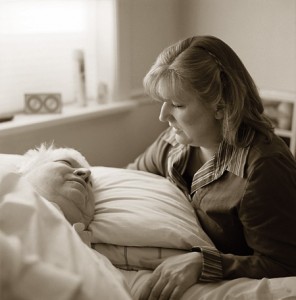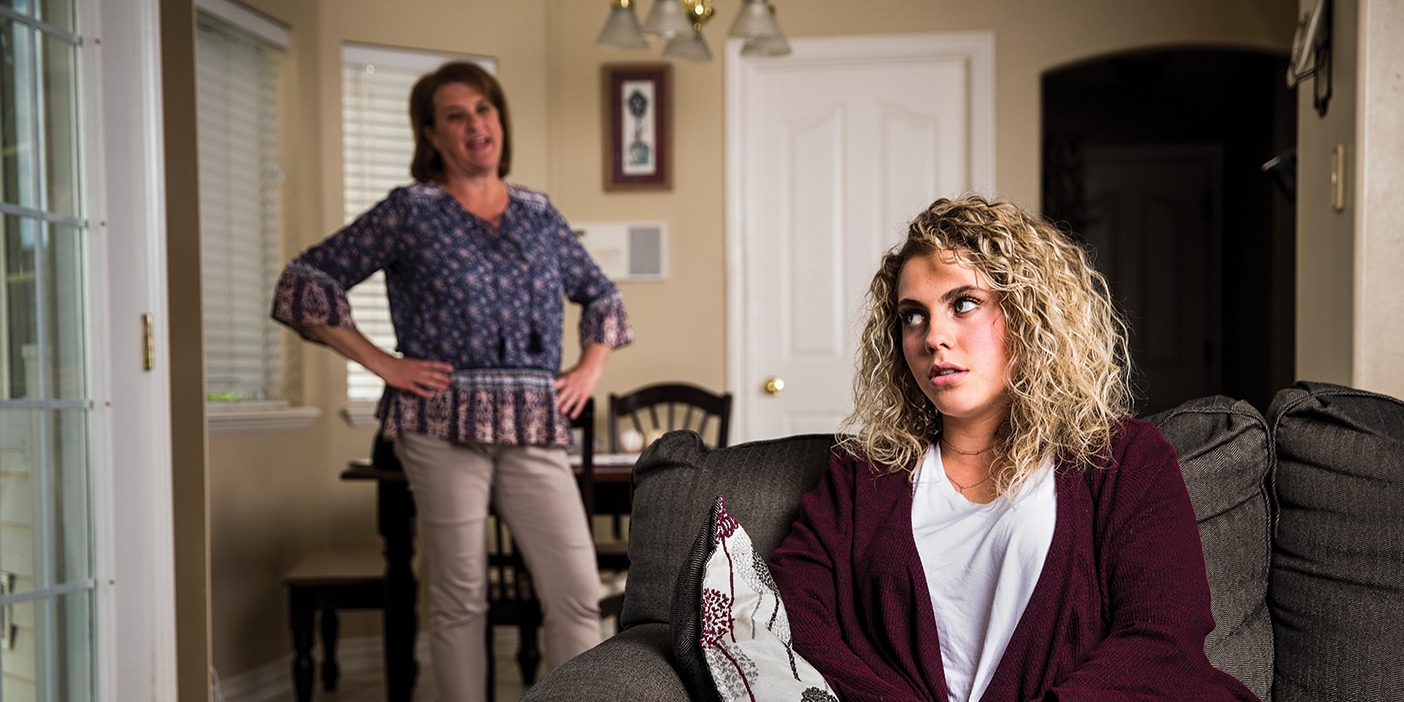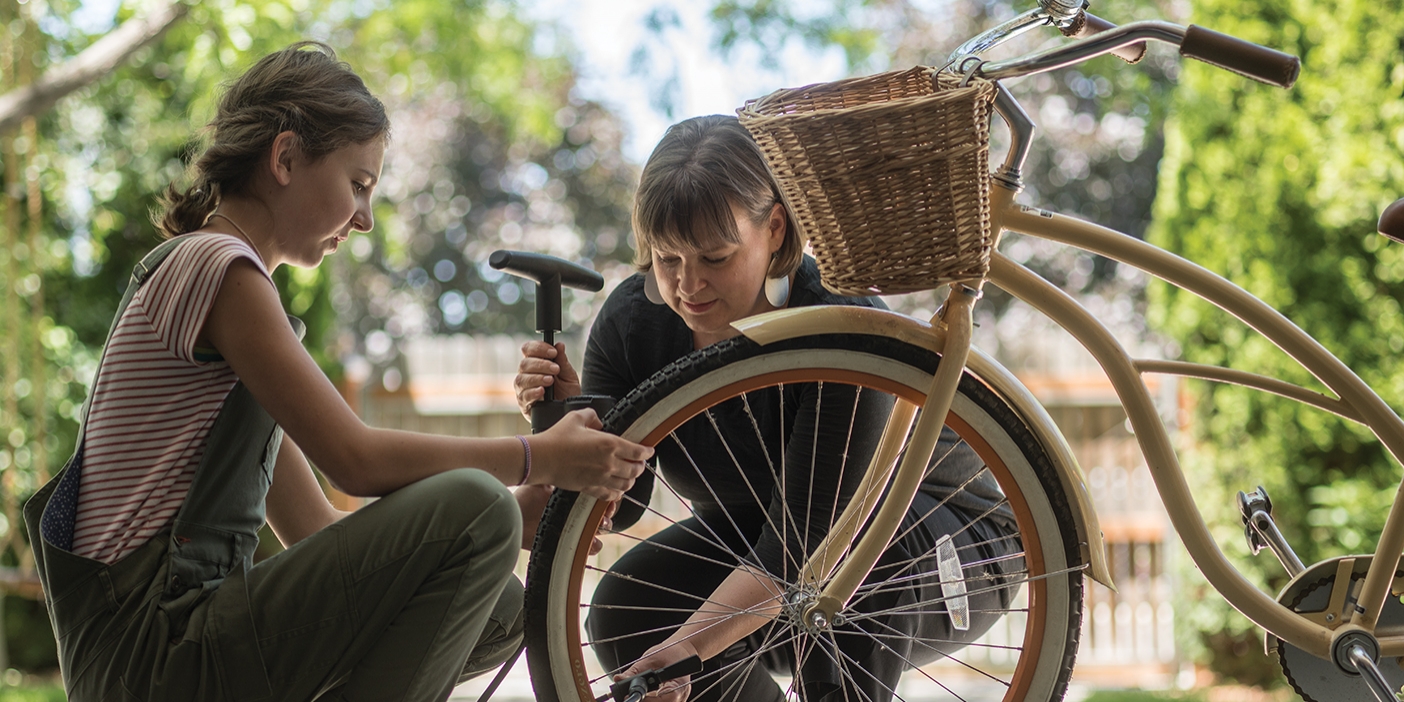To successfully watch over another, caregivers must also watch out for themselves.
 On Christmas Eve a few years ago, I dropped by the assisted-living apartment of my great aunt, whom I had just moved out of her home because of the progression of her dementia. It had been a physically and emotionally exhausting few weeks as I got her moved, then spent several hours each day helping her become oriented and reassuring her.
On Christmas Eve a few years ago, I dropped by the assisted-living apartment of my great aunt, whom I had just moved out of her home because of the progression of her dementia. It had been a physically and emotionally exhausting few weeks as I got her moved, then spent several hours each day helping her become oriented and reassuring her.
At home another responsibility awaited me—caring for my disabled adult brother, Danny. He was home for the holidays and required 24-hour care, including feeding him all meals, changing his briefs, bathing him, and managing his seizures.
As I left my aunt’s apartment to head home to Danny, the apartment manager stopped me. Regretfully, she said, my aunt’s needs were beyond their level of care. I would need to move her to another facility. I had one week.
I kept from dissolving into a puddle of tears until I got to my car. There, in cold and quiet privacy, I sobbed out my feelings. Not only was I frustrated and exhausted, I discovered, I was angry. In fact, the intensity of my rage shocked me. During the next few months, that anger popped up many times as I coped with the needs of both my aunt and my brother. So would insomnia, tearfulness, and irritability. I didn’t know it, but I was showing signs of caregiver burnout.
If you’re a caregiver or you’re close to one—and most of us fall into one category or the other—a wealth of research-based information is available to help prevent burnout. Experts can help you understand your situation and its risks, learn strategies for managing caregiver responsibilities, and build coping skills.
Jason S. Carroll (BS ’96), assistant professor in the School of Family Life, has conducted several studies about caregiving, particularly caregiving for cancer patients. “We know a lot about how to help people in this situation,” he says.
Saintly Servants and Second Patients
If it seems as though more people are becoming caregivers, it’s no illusion. From autism to Alzheimer’s, the number of people who need caregivers is rising, and, in turn, so is the number of caregivers. Much of the increase is attributable to the aging population. People are living longer, and the older they get, the more likely they are to suffer from chronic illnesses.
“With smaller family sizes today, there are fewer children to care for aging parents and other family members,” says Carroll. “So the chance of people becoming family caregivers for a parent or spouse is very high.”
Those who do become caregivers are often seen as saintly pillars of strength, but this image can be a dangerous trap. As they try to protect others from caregiving burdens, especially the person they’re caring for, caregivers tend to put their own needs aside. “They often believe they need to be strong and optimistic, so they hold in their own concerns and fears and often deny their own needs in order to not burden their loved ones,” says Carroll.
The risk of this behavior is burnout, a state where you become so physically and emotionally depleted that you can no longer function effectively. “In some cases, the physical and emotional toll on family caregivers can be enormous, including fear of doing something wrong, lack of personal time, and losing energy for other roles such as work, child care, or involvement in other relationships,” says Carroll.
Burnout should not be taken lightly. If allowed to progress unchecked, it can permanently damage both the mental and physical health of the caregiver. Studies show, in fact, that caregivers tend to have weakened immune systems and are more susceptible to illness.
“We call it the Second-Patient Syndrome,” says Carroll. “Research indicates that caregivers are at risk for poorer health, substance abuse, reduced social functioning, and even poorer financial status.”
Sharing the Burden
Carroll believes one of the most effective strategies for managing a caregiving situation is to see it as a family challenge, not just a challenge for the patient and the caregiver. When a member of a family is diagnosed with cancer, he says, “all of the family members ‘have’ cancer.” Similarly, if a child is diagnosed with autism or a parent is diagnosed with dementia, family members should educate themselves both about the illness itself and about the “emotional symptoms” that accompany serious and long-term illnesses. “We should view the family as the unit of care, not just the patient with the physical illness,” he says.
It is also important for families to recognize that caregivers cannot manage these situations alone. Families need to carefully and purposefully set up a plan that allows the caregiver to get adequate rest and relief from caregiving responsibilities. This may mean soliciting outside help. In some cases, says Carroll, a family therapist can help families manage the logistics of caregiving by helping them create a caregiving plan and navigate the emotional terrain.
In a study published in 2005 in the journal Families, Systems, and Health, Carroll and his colleagues, including BYU professor of marriage and family therapy Wendy Watson Nelson (MS ’75), found that family members dealing with cancer tend to keep their feelings to themselves because they don’t want to disrupt family harmony. “This ultimately leads to distance and isolation,” says Carroll. “Our research found that when families shared their concerns, fears, and differences, they actually felt more harmony and connection.”
Managing Emotions
The emotions involved in caregiving can be powerful and unexpected. You might feel resentful toward the person you’re caring for, and the resentment might rise to anger at times. Or you might be unable to acknowledge that your anger is toward the person—after all, you love that person—and thus, instead, you feel generally angry.
The first step to managing these feelings is to understand that they are normal. If you realize you’re not a terrible person for feeling the way you do, it’s easier to move through the feelings with good humor and generosity toward yourself. You can also find ways to defuse your anger, such as taking a walk or expressing your feelings to a friend.
Grief is another common emotion for caregivers. You’ve lost the loved one you’re caring for as you knew him or her, and you’re grieving that loss. You might also be experiencing anticipatory grief—knowing the death of your loved one is or could be near. Acknowledging these feelings as a normal and significant part of life is important to coping with them. Let others know what you’re feeling, especially other family members, who likely are experiencing similar feelings.
A third common emotion is guilt, says Carroll. “Scholars have found that guilt occurs often for both the recipient of care and the caregiver,” he notes. “For the recipient, guilt emerges from feeling responsible for placing demands on the caregiver. For the caregiver, guilt can arise because there may be times when caring for a loved one becomes overwhelming.”
There is no such thing as perfect caregiving, but the stakes are so high—a loved one’s life and quality of life—that caregivers often feel like they have to do everything. It’s important to let go of these expectations and accept less-than-perfect caregiving.
Caregiving Doesn’t Last Forever
In my case caregiving responsibilities were limited in duration because I was filling in for my parents while they were on a one-year mission. Most people’s caregiving burden is more open-ended. My parents’ care for my brother, for example, has extended for more than 30 years now. They have turned over most of his care to others, but managing that care and making sure his caregivers get adequate breaks means they continue to bear a significant burden even as they enter their 70s.
But almost all caregiving comes to an end. Knowing this can help you summon the courage and energy you need to endure a difficult situation. It can be helpful to remind yourself of the profound nature of your role and of the benefits you might not see in the moment but that will become apparent over time.
“Recent research has shown that caregiving relationships can promote personal growth and closer family ties,” says Carroll. “This is why scholars sometimes call these types of experiences ‘family crucibles’—because difficulty and growth can be part of the same experience.”
Sue Bergin is a part-time faculty member in the Honors Program and a writer and editor in Orem, Utah.
Tips for Caregivers
• Educate yourself about your loved one’s illness. Knowing what is and isn’t normal in your situation can empower you to cope more easily.
• Take care of yourself. Eat well, exercise, and get enough sleep. Find resources in your area that provide respite care, call on others for help, and set aside time for self-replenishment.
• Keep a list of errands or tasks handy so that when people ask how they can help, you can give them a specific answer.
• Watch for signs of depression and burnout. These include tearfulness, irritability, anger, insomnia, and decreased appetite. Seek treatment if needed.
• Consider joining a caregiver support group. Most communities have several such groups, and many are tied to particular illnesses such as Alzheimer’s.









